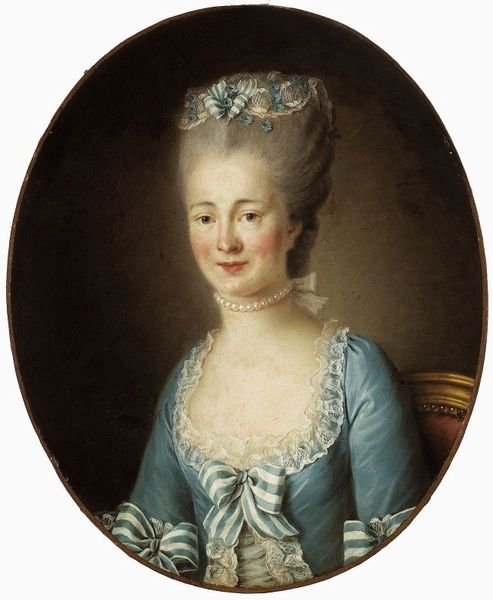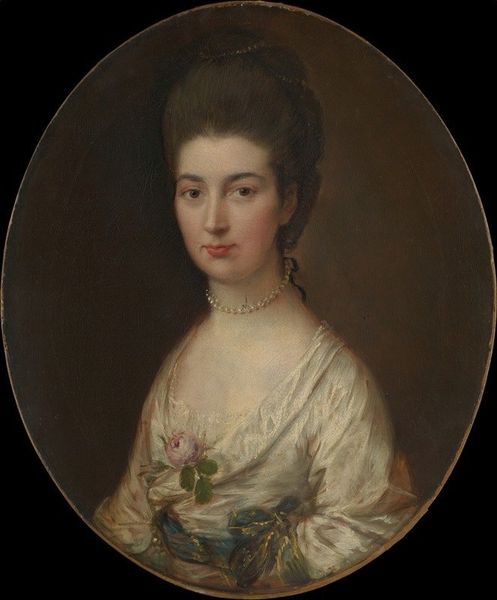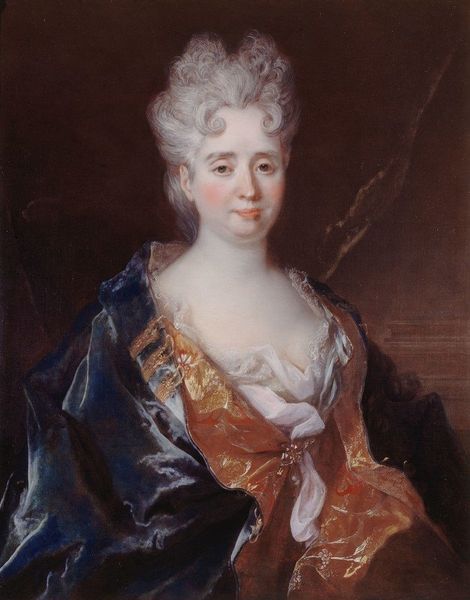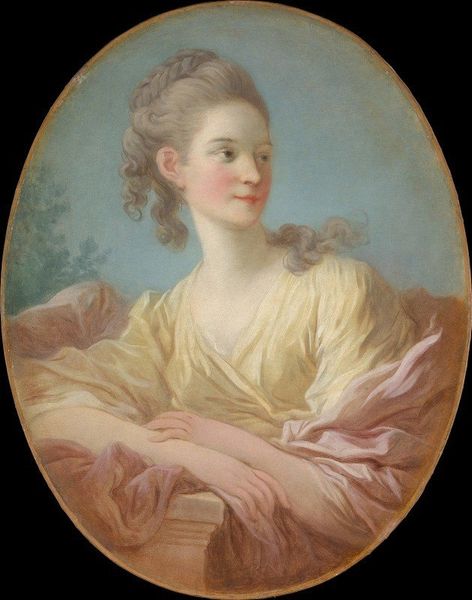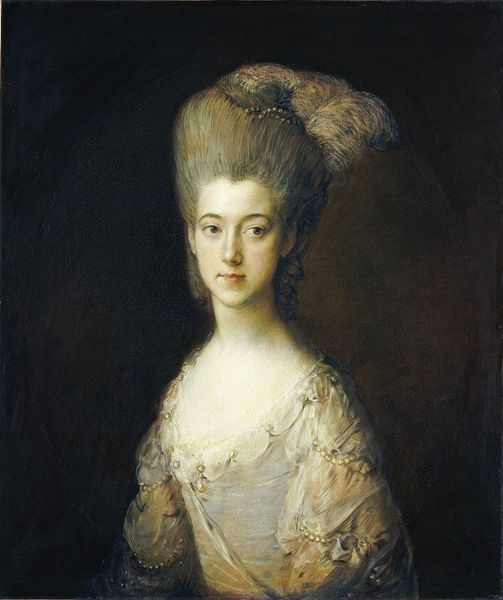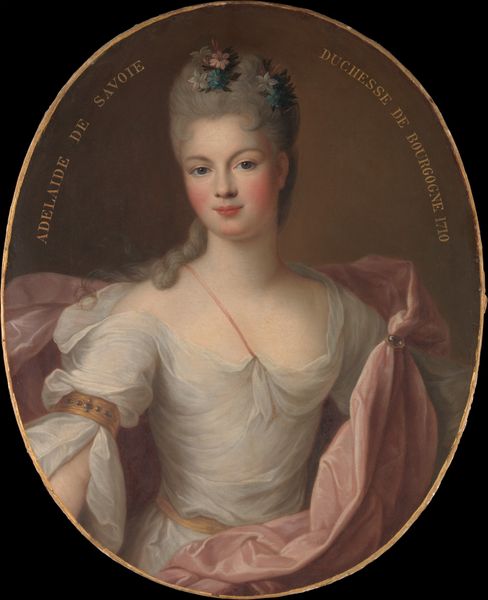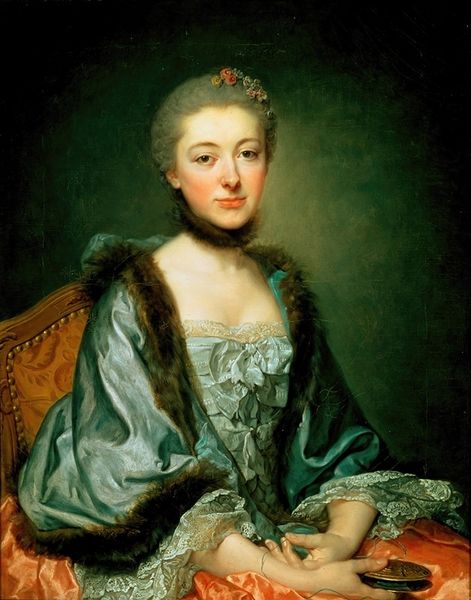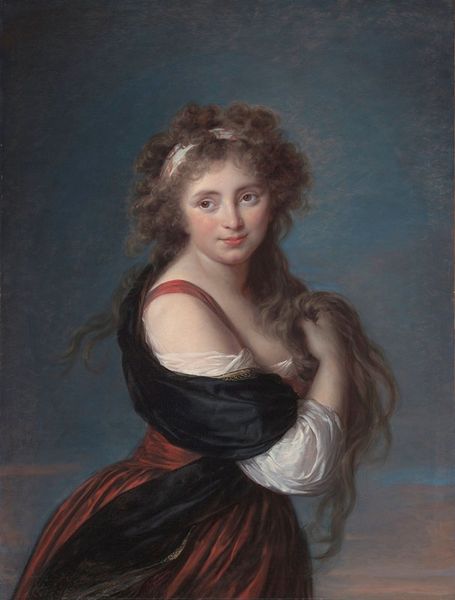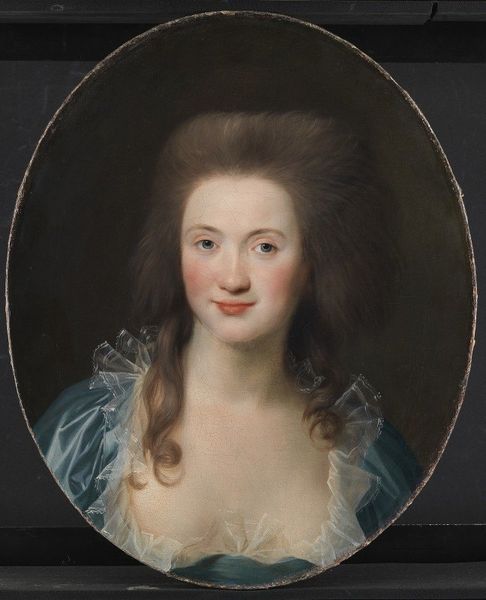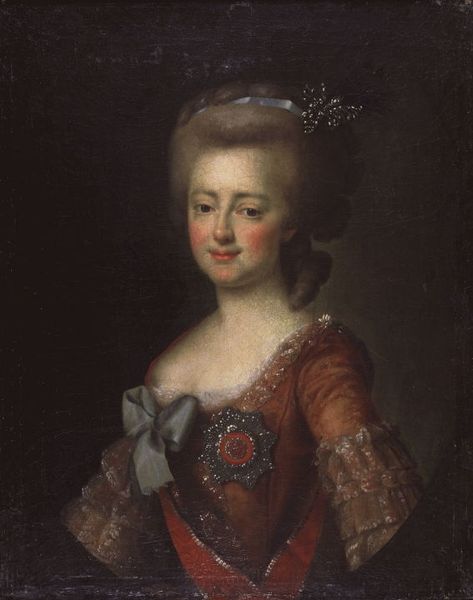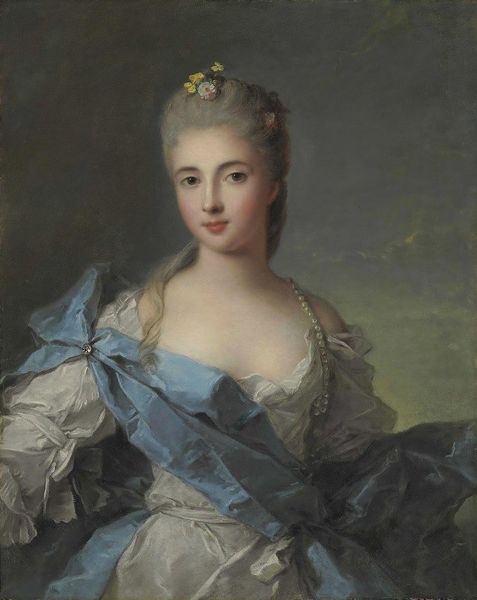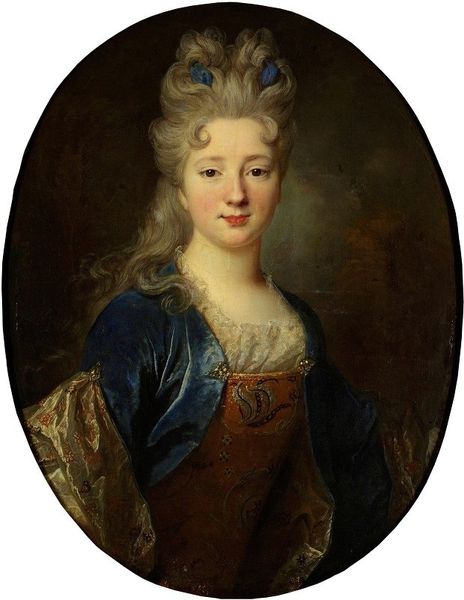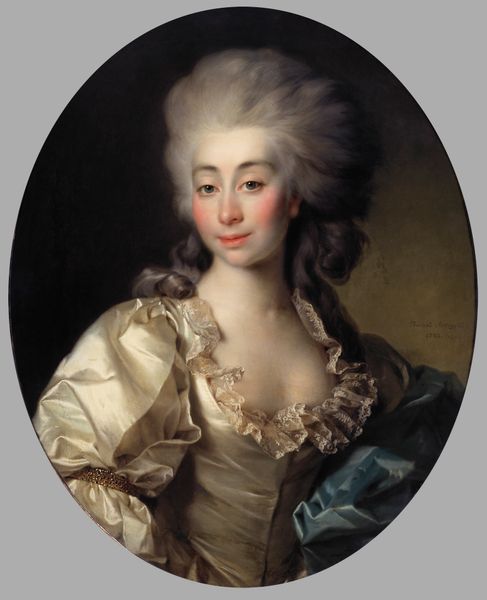
Copyright: Public Domain: Artvee
Editor: This is "Portrait of Madame Aignan de Sanlot," painted in 1776 by Élisabeth Louise Vigée Le Brun. It is an oil painting and its oval composition is striking. The delicate use of blues and whites creates a serene atmosphere. How would you interpret this work? Curator: It's interesting how Vigée Le Brun uses these colors, isn't it? The blue ribbons are so prevalent! Throughout history, blue pigment was incredibly expensive, a symbol of status and often associated with the Virgin Mary, signaling purity and grace. Do you think it could imply a similar symbolic weight in this portrait, particularly in depicting a noblewoman? Editor: That's fascinating! I hadn't considered the historical implications of the color itself. So, the ribbons aren’t just decorative; they could be conveying something deeper about Madame Aignan de Sanlot's character or social standing. Curator: Exactly. And look at the way her hair is styled, seemingly casual yet meticulously arranged, the "pouf" hairstyle becomes incredibly symbolic of aristocratic nonchalance. These visual cues offer a glimpse into the values and aspirations of the French court, while creating idealized notions of feminine virtue. Does understanding this background shift your perspective on the portrait? Editor: Definitely! It’s not just a pretty face anymore. Knowing the symbolism woven into the details makes it a much richer experience. I guess, it prompts us to see how clothes, hairstyle, or decoration becomes infused with layers of memory. Curator: Precisely, we begin to unravel the cultural narratives these symbols carried and, at times, continue to evoke even today. This ability to interpret visual cues, in essence, enables the portrait to continue a dialogue with us over time.
Comments
No comments
Be the first to comment and join the conversation on the ultimate creative platform.
